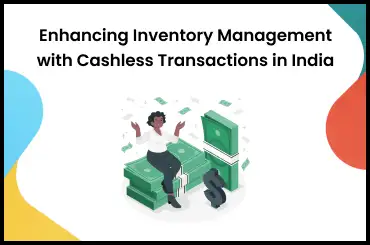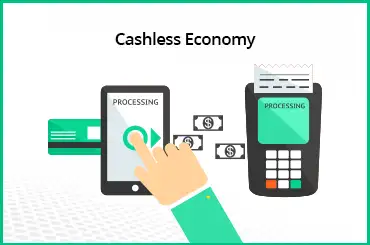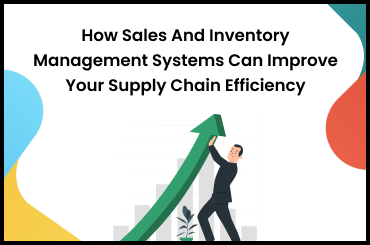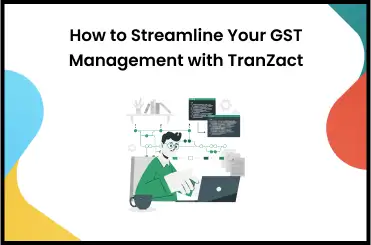A sales invoice is important when it comes to manufacturing business documents. It helps to keep track of sales, expenses, and revenue. Sales invoices also serve as a record for tax purposes as they also mention VAT or sales tax that is due on the transaction.
In this article, let's gain detailed insights about sales invoices along with the importance of a sales invoice, the types of sales invoices, the difference between a sales invoice and sales documents, how to send sales invoices that get paid quickly, and more.
What Is a Sales Invoice?
A sales invoice is a document that serves as proof of a transaction between a seller and a buyer. It is a type of legal document that contains all the details of the products or services sold, the date of the transaction, the amount paid, and any other relevant information.
Sales invoices are typically created by the seller and sent to the buyer after the transaction is completed or goods or services are delivered. They can be issued in paper or digital format, depending on the preference of the parties involved.
Serving as a record of the transaction, a sales invoice may be used by both parties for accounting and tax purposes. It is often used by the buyer to verify the details of the transaction and to make payment.
Why Is Sales Invoice Important?
There are multiple reasons why sales invoices are very important for both customers and businesses. It is transactional proof that provides detailed records of products or services sold, the date of the transaction, and the amount paid. Let's see in detail why sales invoices are so important for modern businesses:
- Legal Proof: A sales invoice contains evidence of the terms and conditions of the transaction. Along with that, information such as the price of the product, the delivery date, and payment terms are also included on the sales invoice. Therefore, it acts as legal proof.
- Accounting: Sales invoices are important for accounting](/blogs/ultimate-guide-about-accounting-for-sme-businesses) documents as they help to keep track of sales, revenue, and expenses. They provide accurate records of sales which allow businesses to monitor their financial performance.
- Taxation: They also hold importance for tax purposes as they show the amount of VAT or sales tax that is due on the transaction. It helps business owners to calculate their tax liability properly and file their tax returns on time.
- Dispute Resolution: Sales invoice also helps to resolve any kind of issue or dispute. Therefore, it reduces the chances of misunderstanding between the buyer and seller. If either party finds any issue with the sold services, they can easily refer to the sales invoice. It acts as evidence to support any claim made by any of the parties.
- Customer Records: It happens more than often that a customer may want to return the item they bought. When businesses have a detailed record of the customer's purchase on a professional sales invoice template, returning or exchanging the product becomes easy.
How Does Sales Invoice Work?
Having understood the importance of sales invoices, the next question is how does this invoice work?
A sales invoice is created by the seller when a customer or buyer purchases any goods or services. This invoice includes all the necessary information about the purchase. Anything the buyer wants to know about such as the product or service sold, the quantity, the price, the date of the transaction, and any taxes or discounts - will be stated on the sales invoice.
When the sales invoice is ready, the seller sends it to the buyer. It acts as proof of transaction for both parties. The buyer can check if all the details about the services or goods they are buying are accurate on the invoice or not. On the other hand, the seller can use the invoice to calculate their revenue, tax, and sales.
Types of Sales Invoices
Choosing the right type of sales invoice is very important. However, there are different types, so which one would you choose? The right sales invoice helps businesses avoid inaccurate record-keeping and streamline operations.
Standard Sales Invoice:
Among all the sales invoices, the standard sales invoice is the most common one. This is used to document a transaction between a buyer and seller. It has all the typical details.
Proforma Invoice:
A Proforma invoice is issued before the completion of the sale. This invoice contains an estimate of the costs associated with the transaction, which includes the product or service, shipping costs, and any applicable taxes or fees.
Commercial Invoice:
This type of sales invoice is required in case of an international transaction. Commercial invoices include details, such as the price, quantity, taxes, and fees of the product or service sold.
Credit Invoice:
Credit invoices are typically issued when a buyer returns goods or cancels a service. They also get to know when the refund or credit is due. The invoice includes a negative amount which will be subtracted from the total amount owed by the buyer.
Debit Invoice:
Also known as a debit note, this type of sales invoice is issued when a buyer owes additional fees or charges related to a transaction. It adds to the actual amount owed by the buyer.
Recurring Invoice:
This type of sales invoice is used for recurring transactions, such as subscriptions or membership fees. It is issued at regular intervals, such as monthly or annually, and includes the same details as a standard sales invoice.
What Information Does a Sales Invoice Include?
A sales invoice serves as proof of sale and provides important information for both parties. Sales invoices are commonly used in retail, wholesale, and e-commerce businesses. So, here are the details that are included in a sales invoice.
Date and Invoice Number
Dates and a proper invoice number are the most basic details to add to the sales invoice. The date is when the transaction took place. It will help you in keeping a proper record and track the order.
Seller Information
The information about the seller will also be included in the invoice. Details such as the company name, address, and contact details must be clearly mentioned. It will help your seller to contact you if they find it necessary.
Buyer Information
Apart from the seller's information, the buyer's information will also be included on the sales invoice. The details are name, address, and contact details so that the seller can identify the buyer and ship the purchased item to them.
Description of Products or Services
Another important thing to add to the invoice is the description of the product such as the quantity, price, and any applicable taxes. It acts as proof to the buyer that they have received what they have ordered.
Payment Terms
Every order has its own payment terms and it must be included in the sales invoice. It contains the due date, price, and consequences of late payment.
Total Amount Due
The buyer must have a clear idea about the division of cost, taxes, and other costs associated. Mention everything with a clear voice so that the buyer does not get confused with anything.
Payment Method
The more payment methods you have, the easier it will be for the customer or the buyer to pay you. Along with payment options, mention all the necessary banking details required for payment transfer while making the sales invoice.
Shipping and Handling Details
Being a seller if you are also responsible for the shipping and handling, you must add all the shipping details on the sales invoice for the easy understanding of your customer. Using this information, they can easily track and receive their product on time.
Return and Refund Policy
Apart from buying details, adding the return and refund policy is also important. The invoice must contain the reason for the return, the time frame for the return, and the conditions associated with the return. This will help your buyer understand their consumer rights.
How Is Sales Invoice Different Than Other Sales Documents?
A sales invoice is a document that is typically issued after a sale has taken place and before the delivery and payment. It is different from other sales documents such as purchase orders, quotes, and delivery notes which are created before or during the sale process to facilitate the transaction.
Purchase Order
A purchase order is a commercial document used by buyers to request goods or services from suppliers. It includes the type, quantity, and price of the goods or services requested, as well as any other relevant details such as the delivery date and payment terms.
The purchase order serves as a contract between the buyer and the supplier, outlining the terms and conditions of the transaction. Now, as the supplier accepts the purchase order, it will act as an agreement between the buyer and the seller.
Sales Order
A sales order is a type of commercial document that a seller issues mentioning all the details of the product that a customer has ordered. However, there is a difference between a sales invoice and a sales order. The sales invoice shows the amount that has been due along with all the other details of the transaction and the delivery. On the other hand, a sales order is an acceptance confirmation of the buyer's request for a service or good.
Sales Receipt
The major difference between the sales invoice and sales receipt is that the invoice is sent after the sale is made but the payment is due, whereas the sales receipt is generated after the payment is received.
How to Send Sales Invoices That Get Paid Quickly?
A proper cash flow is the backbone of any business and quick payments ensure that. Therefore, while running a business, always make sure that the sales invoices are created accurately and get paid quickly. To get paid quickly, follow these tips while sending the sales invoice:
Confirm the purchase order
Being a businessman, one must take care of receiving and confirming the purchase order (PO) before sending the sales invoice. If there are any mismatches and discrepancies, those would be taken care of at the initial stage with the help of a PO.
Confirm the sales order
Before sending the sales invoice, always make sure that the sales order has been sent, as an acceptance of the purchase order. Once the buyer has accepted it, it ensures the details are accurate on both ends.
Provide accurate information
The sales invoice format must include specific and accurate information that matches the details in the purchase order. Therefore, it is best to use simple language and avoid complex terms so that it does not create any confusion or misunderstanding in the future.
Any information on the sales invoice such as the date, description of the goods or services, price, and quantity must be correct and double-checked. This information on the sales invoice should match the details in the sales order.
Provide payment terms
Use clear language on the purchase order to mention all the details such as payment terms, due date, accepted payment methods, and late payment fees, if any. The customer must have multiple payment options given by the seller. Undoubtedly, it is easy and highly increases the chance for the customer to pay promptly.
Send invoices promptly
Send your sales invoices promptly to ensure that your customers have ample time to pay before the due date.
Follow up on late payments
If payment is not received on the due date, follow up with the customer to remind them of the payment terms and request payment.
Offer incentives for early payment
Consider offering discounts or other incentives for customers who pay their invoices early. This can encourage prompt payment and help build customer loyalty.
Use a software
Consider using invoicing software to streamline the sales invoicing process and make it easier for customers to pay online.
Provide a clear and detailed receipt
Once the payment has been received a sales receipt is issued. The sales receipt must very clear and must include a detailed description of the goods or services purchased, the date of the transaction, the name and address of the customer, and the price of each item. In fact, all the discounts and taxes are applied, and the total amount paid is also clearly stated on the sales receipt.
Automate Your Sales Invoice Processes With TranZact
A sales invoice provides essential information for both buyers and sellers. Thus, it helps to ensure a smooth and transparent transaction between buyers and sellers. For easy generation and record-keeping of purchase invoices, sales invoices, purchase orders, and other commercial documents, adopt TranZact. TranZact provides professional and GST-complaint document templates and solutions to save time and eliminate manual dependencies!
FAQs on Sales Invoice
1. What is the purpose of a sales invoice?
The purpose of a sales invoice is to keep proof of the transaction between both the seller and buyer. It provides a detailed breakdown of the goods or services concerned, the quantity, price, and any applicable taxes or discounts.
2. Is the sales invoice a receipt?
No, there is a key difference between a receipt and a sales invoice. A sales invoice is documented before the payment process which includes all the ordered details. On the other hand, a receipt is issued after the payment.
3. Who issues the sales invoice?
The sales invoice is issued by the seller to confirm the detailed breakdown of the goods or services sold, the amount charged, and any applicable taxes or discounts.
4. Is the sales invoice debit or credit?
A sales invoice is a credit to the sales account and a debit to the receivable account.
















